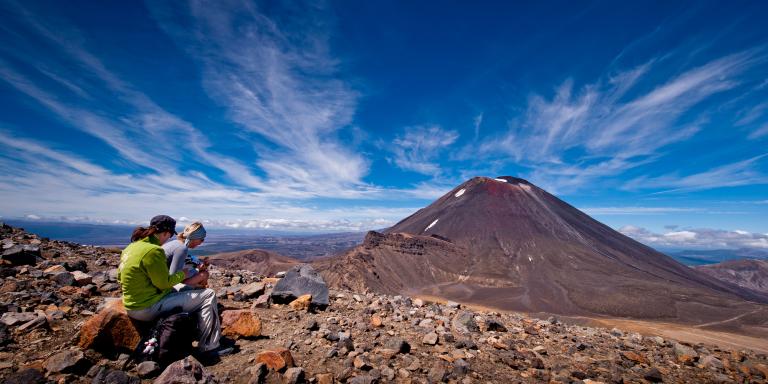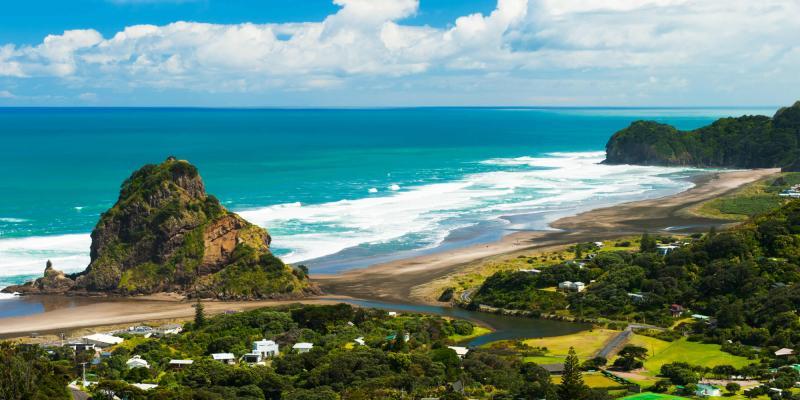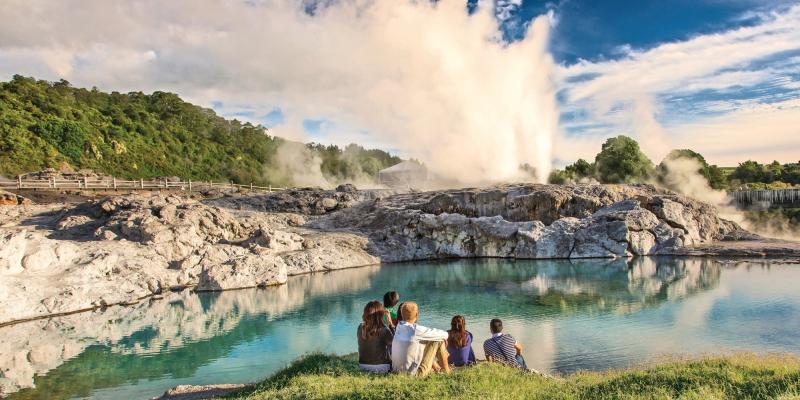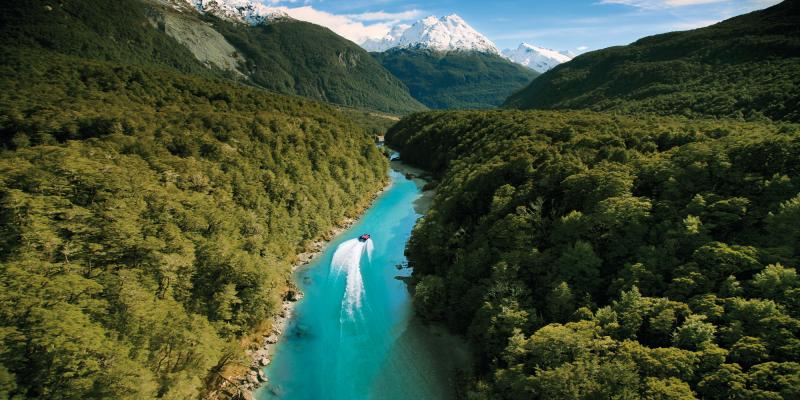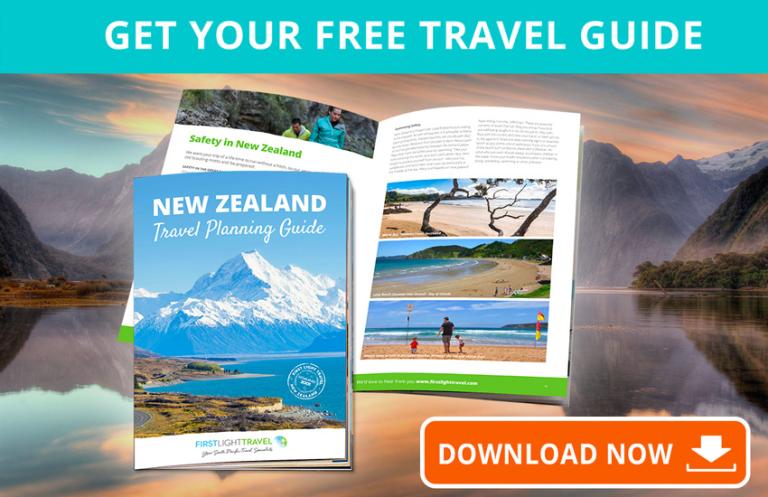The North Island
Land of the long white cloud (Aotearoa): Mountains are a significant feature of New Zealand’s terrain. South Island has eighteen peaks over 3000 meters in its chain and the highest, Aoraki Mouth Cook, is 3754 metres. The North Island has a series of mountain ranges (Tararua, Ruahine and Kaimanawa) forming a north-east belt of elevated country. The cloud forms as moisture-laden air from the sea lifts over the mountain ranges, thus our Māori name, Aotearoa. The moisture condenses and gets dumped as rain or snow, which accounts for our rainfall.
The Shaky Isles: New Zealand’s position on the boundary of two tectonic plates gave the country this reputation in the early settler days. New Zealand is one of two visible landmasses on the recently acknowledged Zealandia continent. As you’ll probably know in recent years we have had our fair share of earthquakes. Interestingly, there is more coast line to explore thanks to the earthquakes. Be assured that most earthquakes aren’t ‘felt’ by most people being very small or very deep.
Climatic features of our island nation: New Zealand is a long, narrow country sitting by itself in the South Pacific. Australia is our nearest neighbour to the west, about 2000 kilometres across the Tasman Sea. To the east, the next large land mass is South America and coastal Chile. New Zealand sits in temperate latitudes and experiences a range of climates. New Zealand has a lot of coastline but no land borders.
North Island (Te Ika-a-Māui) has a subtropical climate especially in the north. It has rugged mountain ranges, a central plateau, and gentle rolling farmland on both sides. You can travel through landscapes like beaches, sprawling farmlands and geothermal wonders. New Zealand’s political history began in Northland and Wellington is the seat of our government. Māori culture is evident in many areas of North Island. In particular, the Waitangi Treaty Grounds and Kerikeri are great places to learn about New Zealand’s early human history.
North Island is temperate in the south and sub-tropical in the north. Central North Island and the east are sheltered by mountains to the west so it gets less wind and has a dry, sunny climate. The South-west is a bit exposed and is often windy due to disturbed weather patterns from the Tasman Sea.
The Southern Islands
South Island (Te Waipounamu), known by inhabitants as ‘the main land’, has the largest land mass. It is a great place for a holiday as it is home to only a quarter of the population. There is a great diversity of natural and manmade landscapes to explore and, in some of the more remote places, you may get the impression that you are the first visitor in some time. There are any number of circular road routes to give you the opportunity for a really good poke around.
South Island climate varies considerably depending where you are. The West Coast has a high rainfall, whereas Mackenzie Country of inland Canterbury is semi-arid, and the East Coast on the Canterbury Plains gets the least rain. The southern and south-western parts of South Island have a cooler and cloudier climate, and the northern and north-eastern parts are the sunniest.
Stewart Island (Rakiura), the third largest island, is home to about 380 people. It is off the South coast and is largely hilly, natural bush and river valley. There is considerable Māori mythology and European history. It’s a great place to observe the Aurora australis. It has an exposed location so the climate can get a bit rugged with a high rainfall. When you are done with the larger islands there are another 700 smaller ones close by, including some that are holiday locations in their own right.
As Young as we Look
Geologically young: Our country is still in the throes of mountain building which began 15 million years ago. Uplift and erosion is constantly reforming the land. This offers a fascinating puzzle for any budding (or expert) geologist and a varied topography for holidaymakers. Watch for:
- Uplift and buckling of the oldest rock in New Zealand.
- Erosion of sandstone and mudstone (greywacke).
- U-shaped valleys formed by glaciers.
- Flat plains of dumped moraine.
- Terraces in river valleys, and around the coastline.
- Braided rivers carrying debris to the build coastlines.
- Limestone bluffs, karst landforms and caves.
- Volcanoes and evidence of past activity.
- Lakes formed in volcanic craters
- Active volcanic and thermal areas
- Inland sand dunes
- Exposed rock layers
- Sandy beaches with adjacent stony beaches
Political development: Although we have only 4.25 million people, New Zealand is a developed country and ranks highly on international comparisons. We are a bi-cultural nation and although the most commonly spoken language is English, New Zealand has three official languages including Māori and New Zealand sign language. The population of New Zealand is mostly of European descent and indigenous Māori is the largest minority. Asians and non-Māori Polynesians are also significant minority groups, especially in urban areas.
The Treaty of Waitangi is regarded as New Zealand’s founding document, and it endures to influence the relationship between Māori and the Crown today. The Treaty is an agreement between the British Crown and Māori chiefs written in 1840, in both Māori and English. It enabled the British to establish a government in New Zealand and confirmed to Māori the right to continue to exercise rangatiratanga (the right of Māori to rule themselves).
New Zealand functions as a Constitutional Monarchy with ties to the British Crown, though the King holds no substantive political sway; his role is purely symbolic. As an independent member of the Commonwealth, New Zealand is governed by its Parliament in Wellington. Utilizing a mixed member proportional (MMP) electoral system, the country ensures representation for all. A visit to the iconic Beehive, the seat of our Parliament, offers a glimpse into our democratic process, even revealing the building's intriguing foundations.
Agriculture: Traditionally New Zealand has been known as the country of 30 million sheep and 10 million cattle. We still have way more livestock than people and, if you travel in springtime, you will understand why pastoral farming is a significant industry. We also have extensive forestry, horticulture, aquaculture and beekeeping industries. New Zealand is free of some the pest and diseases that are problematic for agricultural production in other countries, because it is geographically isolated. That’s why our biosecurity guys work to limit the entry of risks at air and sea ports.
Birdspotting: New Zealand is blessed with many unique bird species. As you travel, you will visit a variety of landscapes that our bird population calls home, including estuaries, beaches, rocky headlands, wetlands, rivers, lakes, forests, mountains and offshore sanctuary islands close to the mainland. You are likely to spot some species even if you don’t activity seek them out. Just a word of warning - if you are heading into the mountains you are likely to meet with, or be bedevilled by, our mountain parrot or Kea. They are mischievous more than malicious but be sure you don’t leave your gear unguarded.
Plant and gardens: New Zealand has native flora too, and around 80% of our trees, ferns and flowering plants are endemic. You will see naturally occurring native flora in unique ecosystems:
- Tall kauri and kohekohe forests
- Rainforest dominated by rimu, beech, tawa, matai, rata and ferns
- Swamp, peatland and inter-tidal wetland forests
- Dunelands with their spinifex, pingao
- Alpine herb fields
- Scrub and tussock.
New Zealand also has an amazing variety of public gardens, and private garden that allow visitors. Some were laid out by early landowners and continue to thrive with care and creativity. There are impressive plant collections, themed gardens, and lots of passionate gardeners.
Talk to First Light Travel about features that you want to work in to your holiday. Aren’t you getting excited?
